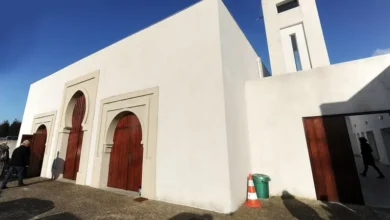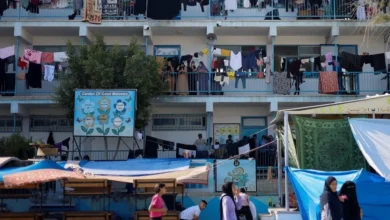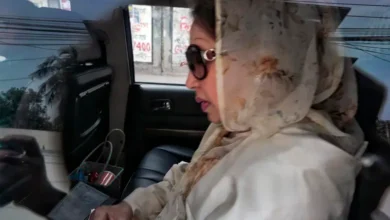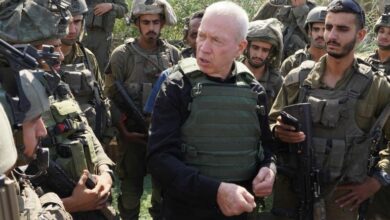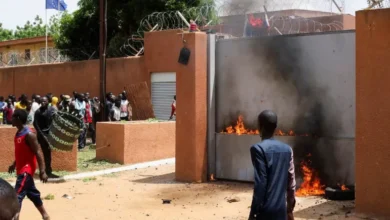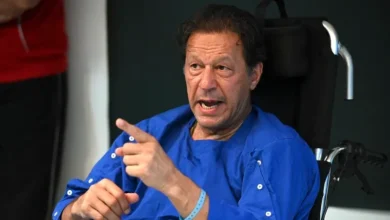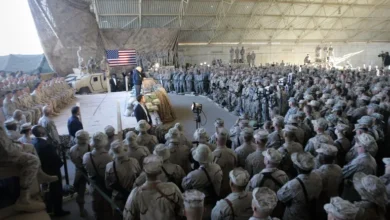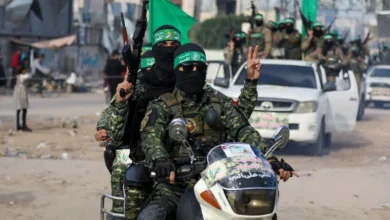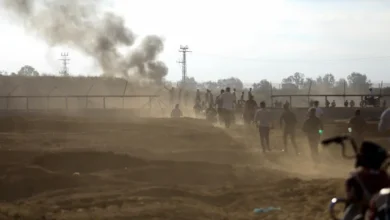What have open source videos revealed about the Gaza hospital explosion?
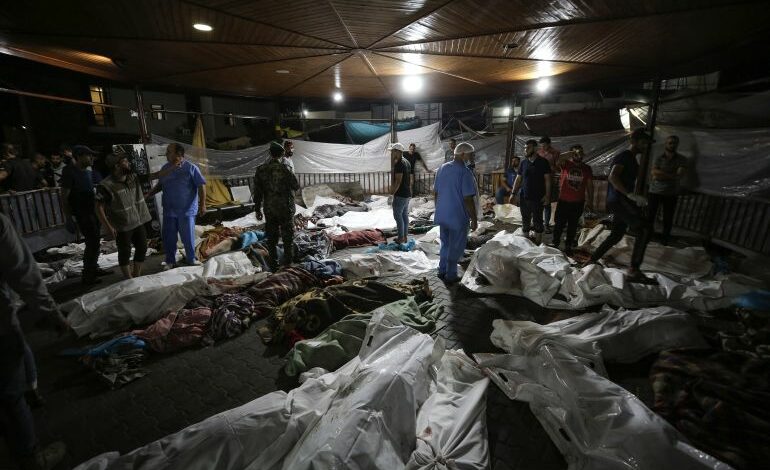
The United Nations on Friday called for an independent international investigation into a devastating blast at a packed hospital in Gaza City earlier this week, as the conflict between the Israeli military and Hamas rages on.
Palestinian officials in the besieged Gaza Strip blamed an Israeli strike for the explosion at al-Ahli Arab Hospital, while the Israeli army said it was caused by an errant rocket fired by the armed group Palestinian Islamic Jihad, which denied the assertion. Israel’s ally the United States has also put the blame on Palestinian fighters, while Arab states have blamed Israel.
The Palestinian health ministry said more than 470 people were killed in the explosion, while Israel said the number was deliberately inflated. US intelligence agencies assessed the number of victims to be between 100 and 300 people.
In the days leading up to the explosion, Israel ordered 1.1 million Palestinians in the north of Gaza to evacuate to the southern part of the Strip ahead of a looming ground offensive. Israel’s military specifically issued evacuation warnings to the al-Ahli Arab Hospital, according to the Anglican Church that runs the medical facility.
On Friday, a spokesperson for the UN’s human rights office said staff were trying to collect evidence on the ground, but the heavy bombardment and the shortage of fuel amid Israel’s “total siege” of the enclave were hampering efforts.
Meanwhile, several news organisations including Al Jazeera have analysed video footage of the incident in recent days to piece together what happened. While Al Jazeera continues to gather information, here is what you need to know:
What happened?
The explosion took place at about 7pm local time (16:00 GMT) on Tuesday. Live footage from Al Jazeera showed a bright light rising in the sky and flashing twice before drastically changing direction and exploding.
A blast is then seen on the ground in the distance, followed by a second much larger explosion closer to the camera.
In the aftermath, footage and images from inside the hospital compound showed about two dozen destroyed vehicles in a car park. They were surrounded by damaged buildings with some of their windows blown out and blood on the walls and the ground.
What does the footage reveal?
An investigation by Al Jazeera’s Sanad verification team found that Israeli statements seem to have misinterpreted the evidence to build a story that one of the flashes recorded by several sources was a rocket misfire.
Based on a detailed review of all videos, Sanad concluded that the flash Israel attributed to a misfire was in fact consistent with Israel’s Iron Dome missile defence system intercepting a missile fired from the Gaza Strip and destroying it in midair.
Channel 4, which published a video analysis examining the evidence presented by both sides, said there was “no proof that the midair and ground explosions are necessarily linked”.
So far, there appears to be no conclusive evidence to determine who was behind the second blast, the one that hit al-Ahli hospital. A number of organisations have suggested that the relatively small crater left by the attack appears incompatible with weapons habitually launched by Israel.
The investigative journalism group Bellingcat identified what appeared to be the impact crater after analysing footage and images of the aftermath. In a preliminary analysis, the group said the ground surrounding one side of the crater showed a cone of scarring and pitting, consistent with the explosion of a munition at this site.
Marc Garlasco, a military adviser at the PAX Protection of Civilians team, noted the impact point did not appear to be consistent with the 500, 1000 or 2000-pound bombs used in Joint Direct Attack Munitions (JDAMs) used by Israel, according to the Bellingcat report.
Channel 4 journalists who visited the site in the aftermath of the incident also reported seeing small craters compatible with mortar strikes rather than missiles. Surrounding buildings only had superficial damage and no structural collapse.
The broadcaster said “this makes a ground detonating Israeli missile strike unlikely, but it doesn’t rule out an airburst munition which could cause major loss of life but would produce far less structural damage.”
Footage reviewed by the BBC, meanwhile, revealed inconsistencies in the reconstruction of events presented by Israeli army spokesperson Daniel Hagari on Wednesday. “The spokesman said it had been fired from a nearby cemetery – and there is a cemetery next to the hospital. But a map displayed by the spokesman showed a launch site further away. We have not been able to locate a cemetery there,” the British network said.
According to the broadcaster, an important part of missing evidence is missile fragments. Projectiles are often identifiable by the wreckage of their shell and can be used to determine the projectile’s origin, but in this case, the evidence has yet to be found.
Is there other evidence?
Social media accounts on both sides have been scrutinised in the search for clues as accusations fly and tempers flare.
The Palestinian Islamic Jihad posted a message on Telegram at 7:09pm on the night of the explosion saying it had fired a barrage of rockets towards Israel – just minutes after the blast occurred.
In an interview with The New York Times on Wednesday, Musab al-Breim, a spokesman for the group, said the timing of posts did not always indicate the timing of launches.
Posts on X sent by Hananya Naftali, a digital aide to Israeli Prime Minister Benjamin Netanyahu, also aroused suspicion. “Israeli Air Force struck a Hamas terrorist base inside a hospital in Gaza,” he wrote, but the post was almost immediately deleted.
By 10.58pm, Naftali apologised on X for sharing “a Reuters report” that “falsely stated Israel struck the hospital”. He said he had since deleted the tweet. “As the [Israeli army] does not bomb hospitals, I assumed Israel was targeting one of the Hamas bases in Gaza,” he added.
The Israeli army also released a video with a recording of a conversation between purported Hamas officials, where they appear to talk about the misfired rocket that had caused the hospital blast.
In its analysis, Channel 4 said it had found the call’s credibility questionable due to the syntax used, accent and tone of voice.
One journalist later asked Hagari at the press conference: “I’d like you to address the question of credibility, because … the [Israeli army] has a less than perfect track record with the issue of credibility”.
In his response, Hagari admitted previous shortcomings, but said that now was different.
